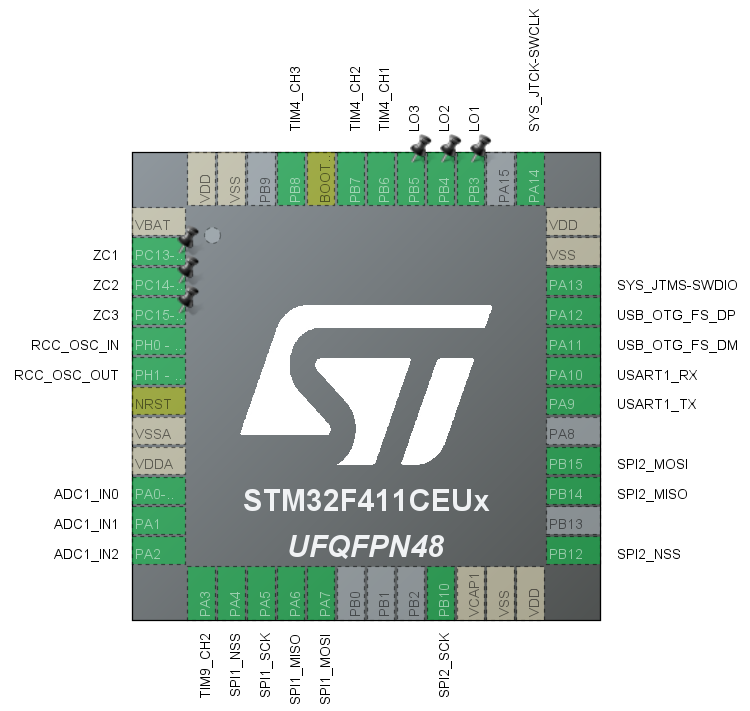Difference between revisions of "STM32 Electronic speed controller (ESC)"
Jump to navigation
Jump to search
(→MCU) |
(→MCU) |
||
| Line 31: | Line 31: | ||
* 3 x low side outputs | * 3 x low side outputs | ||
* 3 x interrupt capable inputs for zero crossing detection | * 3 x interrupt capable inputs for zero crossing detection | ||
| + | |||
| + | Experimentally trying to do this on an [[STM32F411]] (of [[Black Pill]] fame) result in this: | ||
| + | |||
| + | [[File:ESC Pinout Test.png|800px]] | ||
| + | |||
| + | In other words, the 48 pin STM32F411CE is quite sufficient for this purpose. | ||
== MOSFET Half Bridge Driver == | == MOSFET Half Bridge Driver == | ||
Revision as of 02:44, 19 May 2022
Electronic speed controller (ESC) is a device which can control a Brushless DC electric motor. This page is meant as a place to write down research notes and it is most definitely a work in progress.
Control
The first ESCs were typically controlled by applying a PWM signal to a pin. Since then many other both analogue and digital approaches have been developed. This section list some of these along with benefits and drawbacks.
Pulse width modulation (PWM)
To be added
SPI
To be added
USB
To be added
MCU
The choice of the optimal MCU is somewhat complex. The following input/output is necessary:
- USB (DP/DM)
- SPI Slave (CLK, MOSI, MISO and CS)
- SPI Master (CLK, MOSI, MISO and CS for flash storage)
- SWD (CLK, DIO)
- UART (RX, TX for debugging)
- 3 x Analog In for current measurement
- 3 x PWM capable high-side outputs
- 3 x low side outputs
- 3 x interrupt capable inputs for zero crossing detection
Experimentally trying to do this on an STM32F411 (of Black Pill fame) result in this:
In other words, the 48 pin STM32F411CE is quite sufficient for this purpose.
MOSFET Half Bridge Driver
To be added
